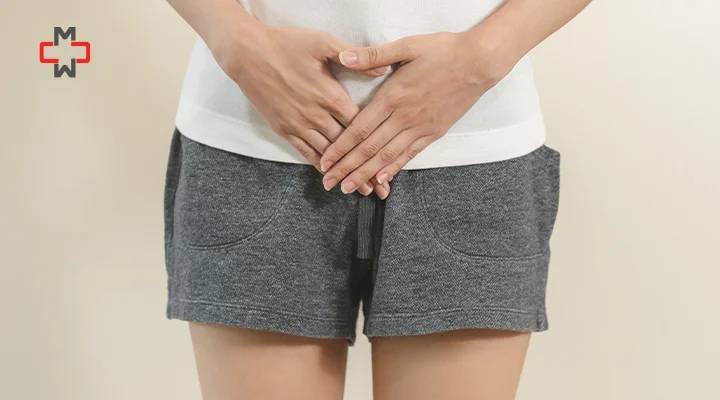Vaginal yeast infections are incredibly common among women, massively affecting millions each year – So if you are someone who suspects being affected by vaginal yeast infection, you have nothing to worry about!
In today’s blog, we will explain everything you need to know about vaginal yeast infections: from understanding what it is, its causes, and symptoms; to answering “how to get rid of a vaginal yeast infection?”.
So, let’s empower you with all the knowledge you need to regain your health, comfort, and confidence.
What is a Vaginal Yeast Infection?
A vaginal yeast infection, also known as candidiasis, is a fungal infection that is caused by an overgrowth of yeast in the vagina, which is primarily of the Candida species.
Candida is naturally present in the vagina, but there are certain factors that can disrupt the delicate balance, leading to an overgrowth and subsequent infection.
Who Gets Vaginal Yeast Infections?
Vaginal yeast infections can affect women of all ages – However, certain factors can increase the risk of developing an infection, including:
- Pregnancy
- Diabetes
- Weakened immune system
- Antibiotic use
- Hormonal fluctuations
- Uncontrolled diabetes
- Stress
- Poor diet
What Does a Vaginal Yeast Infection Look Like?
A vaginal yeast infection typically presents with thick, white, cheese-like discharge, accompanied by itching, redness, and swelling in the vaginal area.
Symptoms of a Vaginal Yeast Infection
While symptoms may vary for individuals, some of the common symptoms include:
- Itching and irritation in the vagina and vulva
- Burning sensation, especially during urination or intercourse
- Thick, white, odorless discharge resembling cheese
- Redness and swelling of the vulva
- Soreness and discomfort in the vaginal area
Vaginal Yeast Infection Causes
Several factors can contribute to the development of a vaginal yeast infection – the primary yeast infection causes include:
- Imbalance in vaginal flora
- Antibiotic use
- Hormonal changes (e.g., pregnancy, menopause)
- Uncontrolled diabetes
- Weakened immune system
- Poor personal hygiene
- Tight or non-breathable clothing
Vaginal Yeast Infection Diagnosis
Diagnosing a vaginal yeast infection typically involves:
- Physical Examination: Your healthcare provider will examine your vaginal area for signs of infection, such as redness, swelling, and discharge.
- Vaginal Swab: A sample of vaginal discharge may be collected and examined under a microscope to identify the presence of yeast cells.
- pH Test: Vaginal pH may be tested to distinguish between yeast infections and other vaginal infections.
Vaginal Yeast Infection Treatment
When it comes to vaginal yeast infection treatment, there are several options available – ranging from over-the-counter remedies to prescription medications.
Listed below are the most common yeast infection treatment options:
– Antifungal Medications:
- OTC Creams and Suppositories: Topical treatments like clotrimazole, miconazole, and tioconazole kill yeast and relieve symptoms like itching and discharge.
- Oral Antifungal Medication: Prescription-only fluconazole, taken as a single dose, effectively treats severe or recurring infections.
– Prescription Medications:
- Stronger Antifungal Creams/Suppositories: Prescribed when OTC treatments fail, containing higher active ingredient concentrations.
- Extended Oral Antifungal Course: Recommended for severe or recurrent cases, ensuring complete eradication of yeast.
– Home Remedies:
- Probiotics: Lactobacillus-rich supplements or topical applications restore vaginal bacterial balance.
- Yogurt: Plain, unsweetened yogurt applied topically may relieve symptoms by introducing beneficial bacteria.
- Tea Tree Oil: Diluted tea tree oil’s natural antifungal properties can ease itching and discomfort.
– Lifestyle and Prevention Strategies:
- Hygiene: Gently wash with mild soap and water, avoiding harsh products like douches.
- Breathable Clothing: Opt for cotton underwear and loose-fitting clothes to reduce moisture buildup.
- Avoid Irritants: Steer clear of scented products and bubble baths to maintain vaginal health.
When To See a Doctor?
While mild yeast infections can often be treated with over-the-counter medications, it’s essential to consult your healthcare provider if:
- This is your first yeast infection
- You’re pregnant
- You have recurrent yeast infections
- Your symptoms are severe or prolonged
- You have underlying medical conditions such as diabetes or a weakened immune system
Frequently Asked Questions
How long can a yeast infection last?
A yeast infection can last from a few days to a couple of weeks.
Will yeast infection go away on its own?
In some cases, a yeast infection may even go away on its own, but it's best to seek treatment for prompt relief.
What are the signs of a healing yeast infection?
Signs of a healing yeast infection include reduced itching, less discharge, and decreased redness and swelling.
How much water to drink to flush out yeast infection?
There's no specific amount of water to flush out a yeast infection, but staying hydrated can support overall health.
– Disclaimer –
This blog is for informational & educational purposes only, and does not intend to substitute any professional medical advice or consultation. For any health related concerns, please consult with your physician, or call 911.
-
About The Author
Dr. Syra Hanif M.D.Board Certified Primary Care Physician
Dr. Syra Hanif is a board-certified Primary Care Physician (PCP) dedicated to providing compassionate, patient-centered healthcare.
Read More







